Mycologists Blitz Tribal Woods in Search of Fungi and Fun
Group of characters work together annually at Rhode Island BioBlitz to find spore-producing organisms
June 15, 2023
AUKE UT NAHIGANSECK/CHARLESTOWN, R.I. — While mycologist Lawrence Millman waited for his ride to the 24th Annual Rhode Island BioBlitz from the Providence Train Station, he did something he rarely does: he used his cellphone to call the reporter who was supposed to pick him up.
Millman only bought a cellphone two years ago, but often refuses to use it and rarely gives out his phone number. He usually arranges things via email, including rides, because he doesn’t own a car and let his driver’s license lapse years ago.
For the Rhode Island Natural History Survey’s annual BioBlitz, which he comes down from his home in Cambridge, Mass., to attend annually, he wore an old T-shirt aptly screen printed with mushrooms, hiking boots, and a bit of gray scruff.
He has been coming to the event — a 24-hour scramble to survey the number of species at a particular Rhode Island site — for a decade, he thinks. It’s one of the only mycological events that he still likes attending.
“Male myco-files of a certain age are very eager to compete with each other,” Millman said.
The fungi enthusiast doesn’t like crowds and doesn’t much care for the norms and rules of life, much like the numerous but elusive organisms he likes to study.
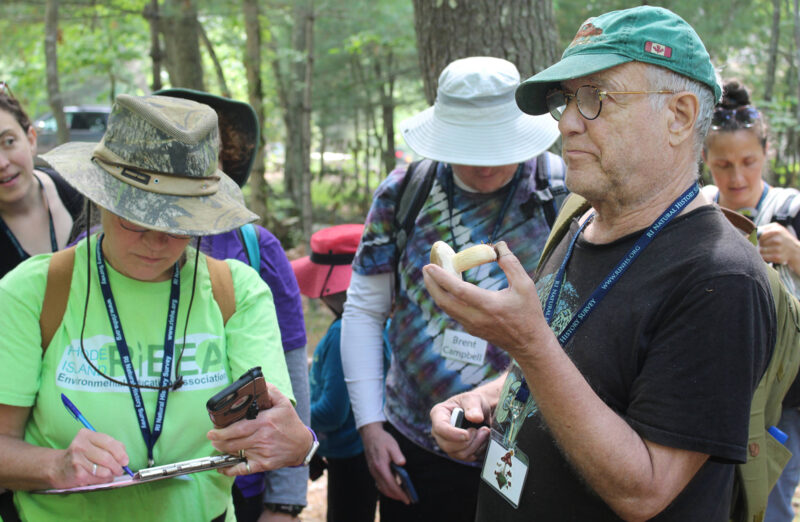
Arriving at the Narragansett Indian Tribe’s reservation in Charlestown, called auke ut Nahiganseck, meaning “We dwell here,” Millman noted that dry conditions might limit what the fungi team could find during the June 9-10 weapon-free hunt.
At each BioBlitz, participants split up into groups based on the different types of organisms they are searching for, with the goal of identifying as many species as possible within 24 hours.
Last weekend there were more than two dozen teams looking for everything from mollusks and mammals to mosquitoes and mosses.
For insects alone, there are nine teams dedicated to different subgroups. (During the course of this BioBlitz, this reporter learned that a ladybug is indeed not a bug, but a beetle, because it has chewy mouth parts rather than “piercing” ones.)
Many participants come back to the same groups year after year, some create T-shirts and give themselves nicknames. For example, the vascular plant team goes by the “The Plantathletes,” and the lichen group is known as “The Cladonia Crazies.”
The fungi group is called “The Fun Guys,” although Millman asked that the name not be used in this story. The team didn’t have matching T-shirts, but many were wearing mushroom paraphernalia, including earrings, graphic tees, and socks.
Millman, who has been studying, identifying, and writing about fungi the longest, is just one of several mycologists in the group who participate in the annual species search.
Deana Tempest Thomas, who founded the Rhode Island Mycological Society, led the group this year. Ryan and Emily Bouchard run the Mushroom Hunting Foundation and have led the fungi group in the past.
Noel Rowe, who is actually a primate expert, is an annual attendee and started the fungi group at one of the first Blitzes, when he realized no one was taking a tally of these organisms.
Patrick Verdier is a member of the Mycological Society and is usually identified as the man with the microscope getting a closer look at fungi.
In addition to these more seasoned mycologists, this year’s fungi fun group included many newcomers of different ages and backgrounds. Millman said he thought this year’s group was the most diverse fungi team, which helped lead the group to some interesting discoveries.
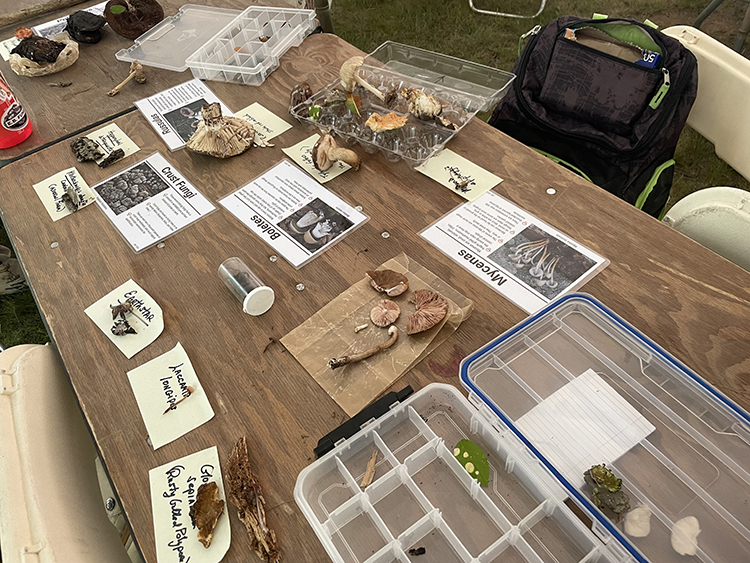
After checking into Science Central — what BioBlitz calls its tented-base camp, where most of the tricky species’ identification happens — and picking out fungi stickers to adorn their name tags, the fungi team listened to the opening ceremonies, which celebrated the event’s first time on Narragansett Indian tribal land.
Then, at exactly 2 p.m. last Friday, Rhode Island Natural History director David Gregg sounded the blown horn, and the mycologists scampered off to the woods.
The first find was Hydnoporia olivacea, announced by Millman.
“Ahhh, the spreading olive tooth,” Emily Bouchard said, as Millman spelled out the Latin name.
“Yes! That’s it!” he said, showing the specimen to the crowd.
Spreading olive tooth isn’t the typical fungus found in fairy tale pictures books or fancy French soups. It doesn’t have a stalk or a cap. Instead, it’s got a small profile, it’s brown, and it was growing on a fallen branch.
For the novice mycologist, it’s hard to distinguish from the tree itself.
“We’re not going to find what we’d usually find this time of year,” Millman told the group, because of the dry weather and constant wind. “Most of what we are going to find is in and on the wood.”
Millman has no problem looking for these types of smaller fungi; in fact, they are the kind he favors. He doesn’t care for the rock stars of the fungi world, the edible kind, unless they are being eaten by something other than a human. He once had a girlfriend, now an ex, tell him he was much more interested in fungi than her.
“I said, ‘No, that’s not true. I’m more interested in that, but not far more interested in that,’” he recalled, with a laugh.
That perspective is much different than some other members of the group, including the Bouchards. As founders of the Mushroom Hunting Foundation, the pair teach people how to hunt for and cook edible mushrooms.
“Larry is much more into small things,” Ryan Bouchard said. “He just wants to take an interest in what they are and what they’re doing in the ecology.”
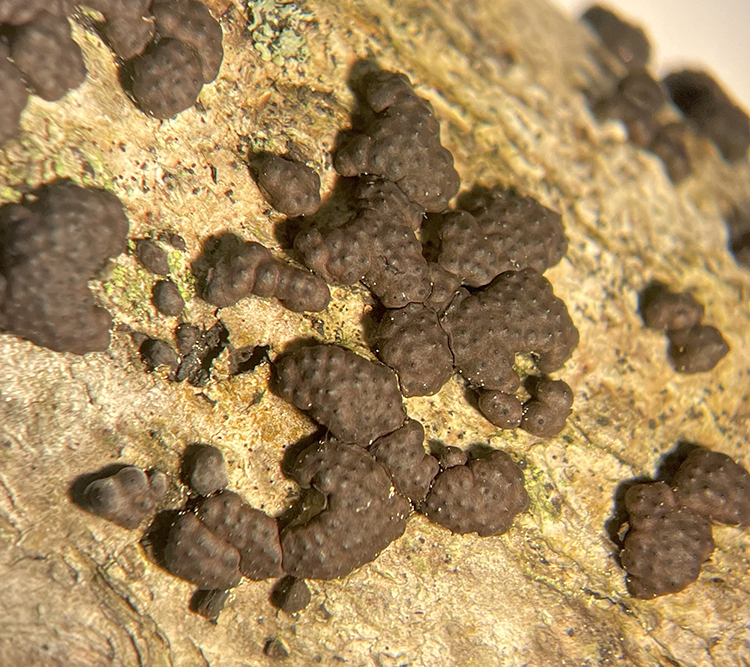
As the group made its way through the dry wooded areas, they found a few more specimens, but decide to head to a wetter area for better results.
Just before they reached a stream on the reservation, someone found an interesting specimen on a tree branch.
“Wait a minute,” said Millman, halting the group and pulling out a tiny microscope to examine further. The branch was covered with cup fungi, he said.
“I say it’s a disco party because if you find one, you’ll find a bunch,” Thomas said of the Pezizaceae family of fungi that tend to grow in the shape of a cup.
“And Deana can hear the disco party from a great distance,” Millman joked.
Moving on to the stream and its banks, the collection of specimens kept growing.
Team members waded through muck and under branches in between reminders that everyone needed to keep drinking water and perform tick checks.
Rowe, the primate specialist, held a basket full of makeshift specimen containers — pill bottles, fishing lure boxes, egg cartons — to carry the fungi of various shapes, sizes, and colors back to Science Central for further study.
He said part of what makes identifying fungi specimens so difficult is the sheer number of them. There are thought to be six times more types of fungi than types of plants.
As he spoke, Samantha Young, who told ecoRI News she only got into fungi this past year after meeting Thomas, found an interesting specimen — a mushroom that appears to grow, at least partially, in water.
Fungi do a lot of weird things, like this, Thomas said. Some grow in extreme places, some glow, some smell like peanuts. The bleeding mycena, which they also found by the stream, appears to bleed from its stalk when it’s snapped.
Despite their oddities, fungi share a common thread in their ecosystem importance. Many have a symbiotic relationship with trees, and without fungus, nothing would decompose, Thomas noted.
After about a dozen more finds, the group was shocked to look at the clock and find it was time to head back to Science Central for dinner.
“Time flies when you’re having fun and fungi,” Thomas said.
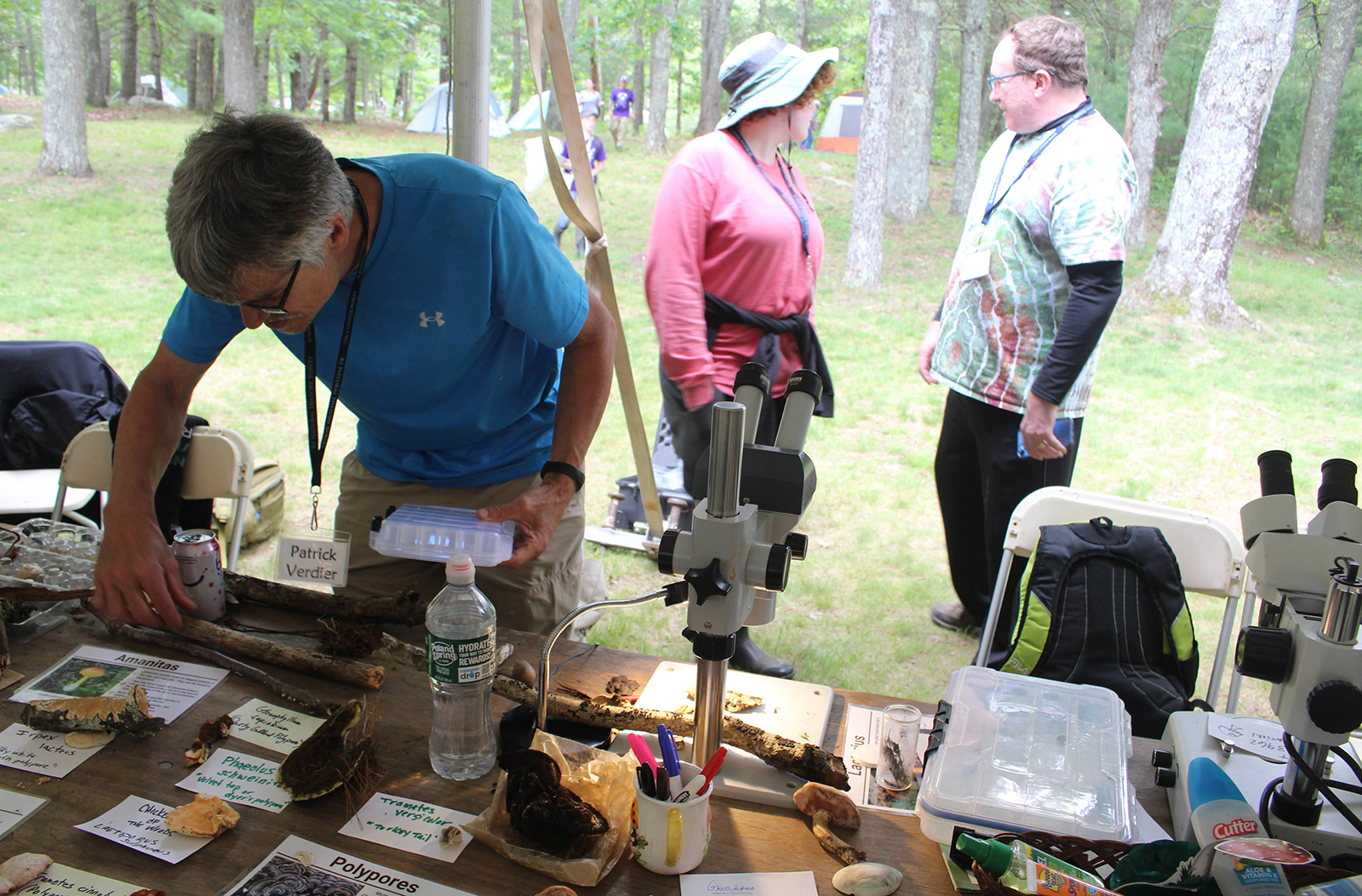
Right after dinner and a talk from Narragansett Indian tribal member Thawn Harris, it started to rain, which got the fungi group a little excited.
During the nighttime walk, Thomas took out a black light to look for more specimens. Many fungi glow under these lights and expose themselves even better than during the day.
It was actually the draw of glowing mushrooms that got Millman interested in fungi to begin with.
With a doctorate in English, Millman traveled the world learning about oral histories of Indigenous people he said he felt akin to because their separation from the rest of society.
Speaking with some First Peoples in Canada, he had heard numerous stories of fungi and their medicinal or malevolent uses, but it wasn’t until he spotted a bioluminescent mushroom on a trip to North Carolina circa 1990 that he realized he needed to know more.
“That ignited everything, so to speak,” Millman said. Among his dozens of titles, Millman has written several books about fungi, both about the science and mythology surrounding them.
Having long used mushrooms as a muse, Millman said he finds the current fascination with fungi, from their starring role in HBO’s “The Last of Us” to their impact at fashion shows, interesting, namely because their usefulness to humans is of little interest to him.
“I actually like mushrooms better than I like human beings,” he admitted.
Though he does like some people a lot, including his compatriots at BioBlitz. He and Rowe struck up a friendship at a Blitz years ago, when Millman dethroned him as the top mycology expert. But Rowe doesn’t mind, and even has hosted Millman overnight while he visits Rhode Island for a Blitz.
Thomas noted this BioBlitz was her and Millman’s friendaversary. Two years ago, they met at the Natural History Survey’s lone fall hunt. That year was record breaking for the fungi team because autumn is prime fungi time.
“I was immediately impressed by her mycological skills, which she continually denies,” Millman said of Thomas. Thomas refers to Millman as her mentor.
And in some ways, the student is getting the chance to surpass the teacher.
“She periodically one-ups me,” Millman said. During the course of last weekend, there were a few things she identified before him. “I keep telling her she’s a real mycologist, and she keeps denying it.”
Looking at specimens under a microscope last Saturday, 18 plus hours into the Blitz, the fungi became their own worlds.
Verdier wielded the machine and showed how a tiny brown smug can change into individualized spores producing mounds, cracked, and separated, like a lava flow on a mountain side instead of a fungus on a branch.
He used the microscope to try to identify some of the specimens that had been brought in from the field. It’s nearly impossible to identify some species of fungi by sight only. In addition to using microscopes, mycologists can look at spore imprints and even use DNA testing to get an exact match.
The substrate, the material that the specimen grows on, can also be important in identifying a species in a kingdom where cousins look exactly the same but only grow on a particular plant or tree.
By the end of the 24 hours, the fungi team had found some 80 species, according to Thomas, though some were taken by Millman, with permission from the Narragansett Indian Tribe, to make more accurate identifications at home.
The number was surprising for the conditions, Thomas said, but they were looking for small things and those things added up.
Millman noted the size of the team also probably contributed to the high count, although he said the number of species they found doesn’t really matter to him. He’s not a big statistics guy, and to him, the BioBlitz is about something more than the numbers can say.
“The virtue is getting outdoors, educating people, coming up with some notion of how healthy a habitat is,” he said on the drive back to the train station.
For all the similar events he has attended, he said the Rhode Island BioBlitz is his favorite.
“I think it’s the best,” he said. “It’s the most serious and the most amusing.”

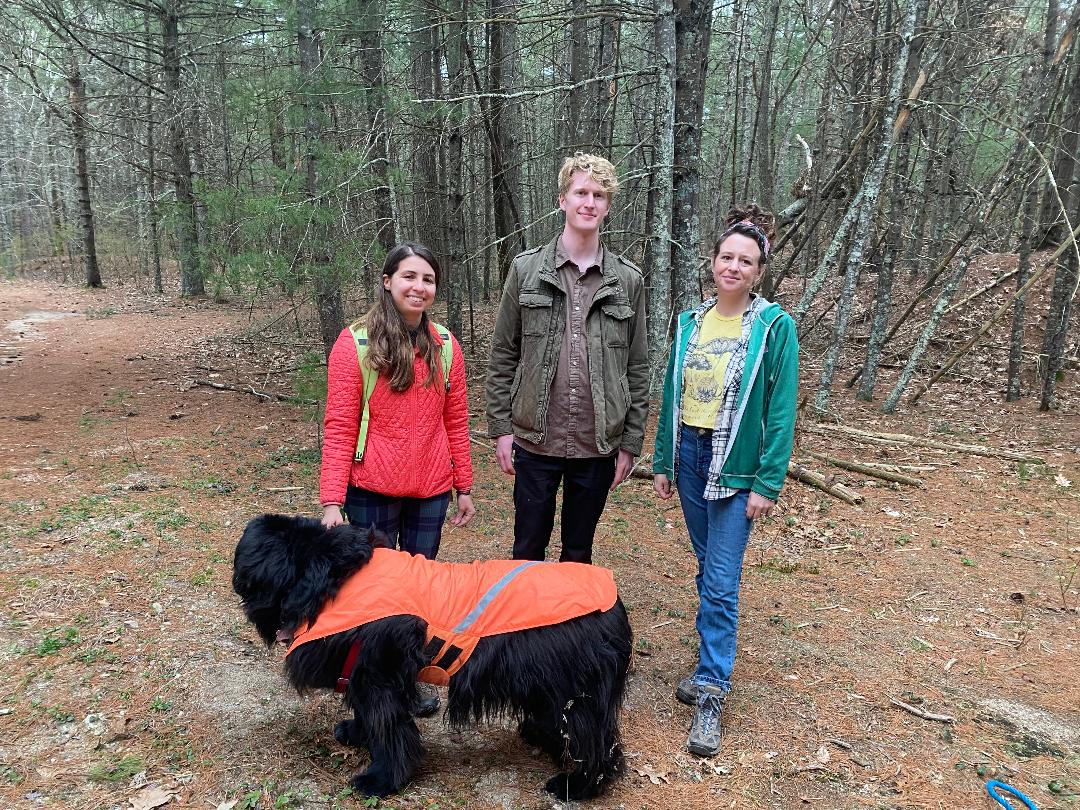
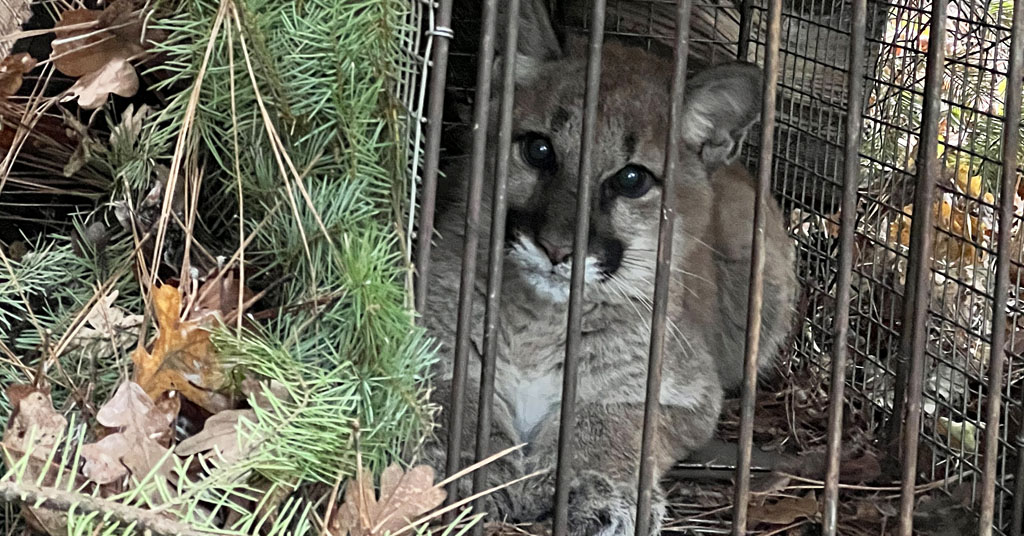
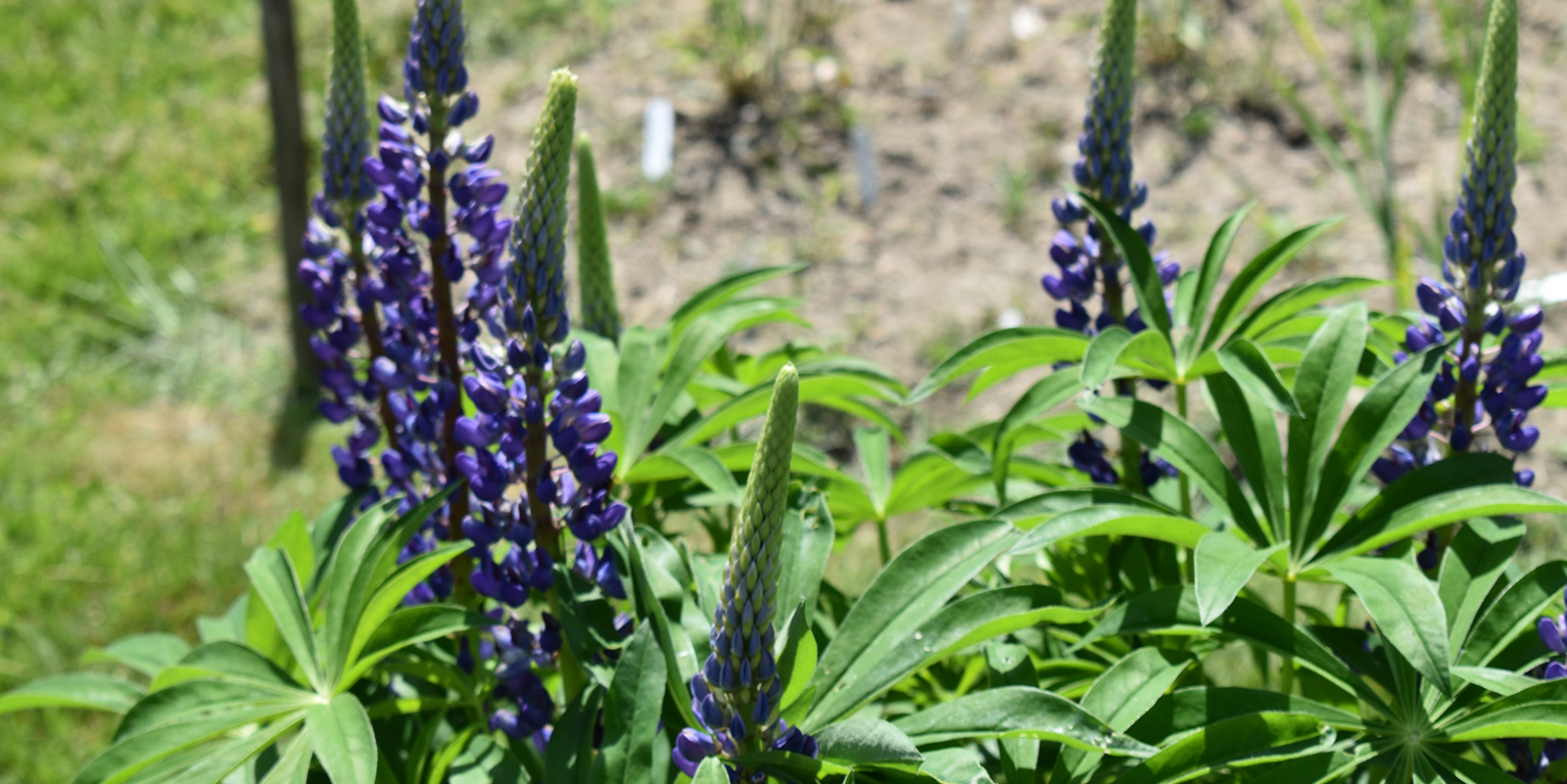
What a great article!
Really captures the characters, as well as the fun-gi.
Magnificent article, and thanks for the mention!
This is the most professionally done article on a local science story in Rhode Island, that I have ever read. Haven’t been a participant I can attest that the article portrays the bio, blitz quite accurately. I read a lot of articles and all types of journals and very often reporters really mess it up. I’m looking forward to seeing more of this reporters byline.
Excellent piece, Colleen! It was nice to meet the woman behind the talent.
Brilliant writing! This article made the whole hunt come alive for us.